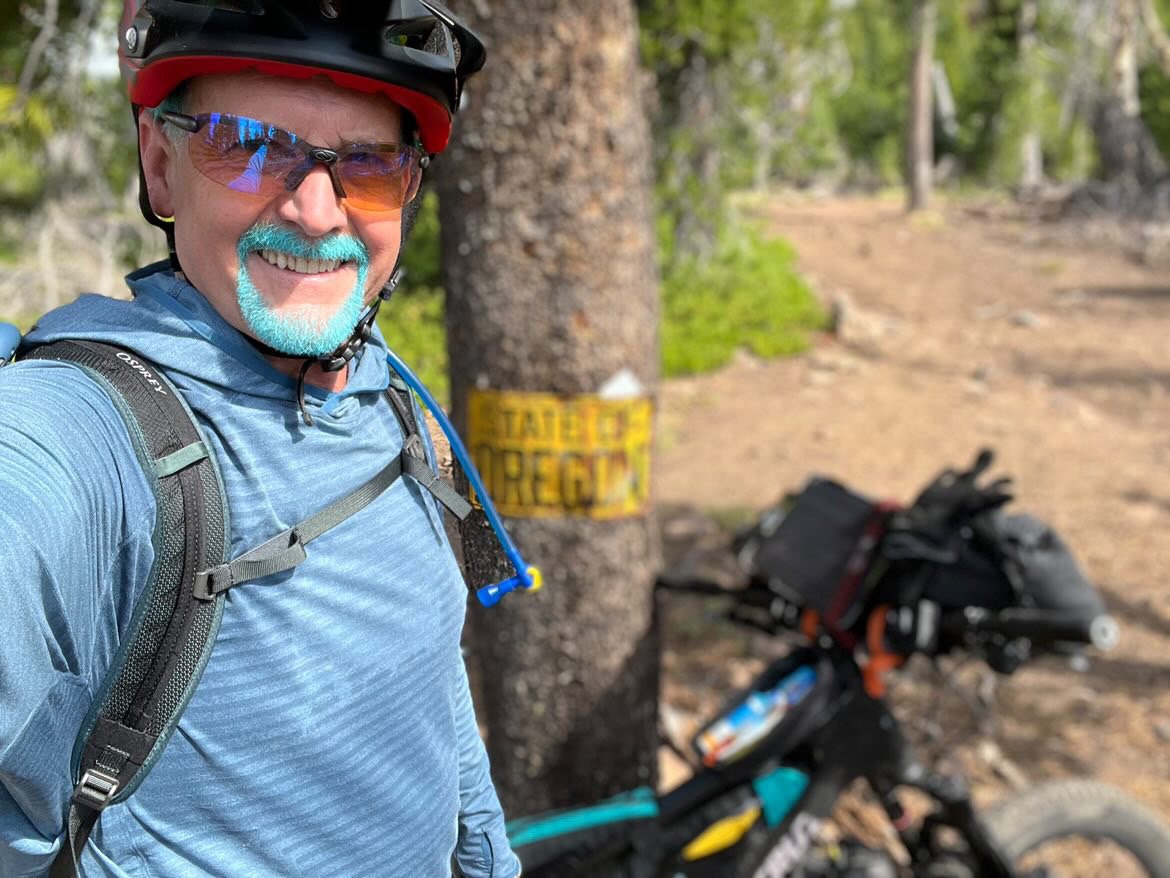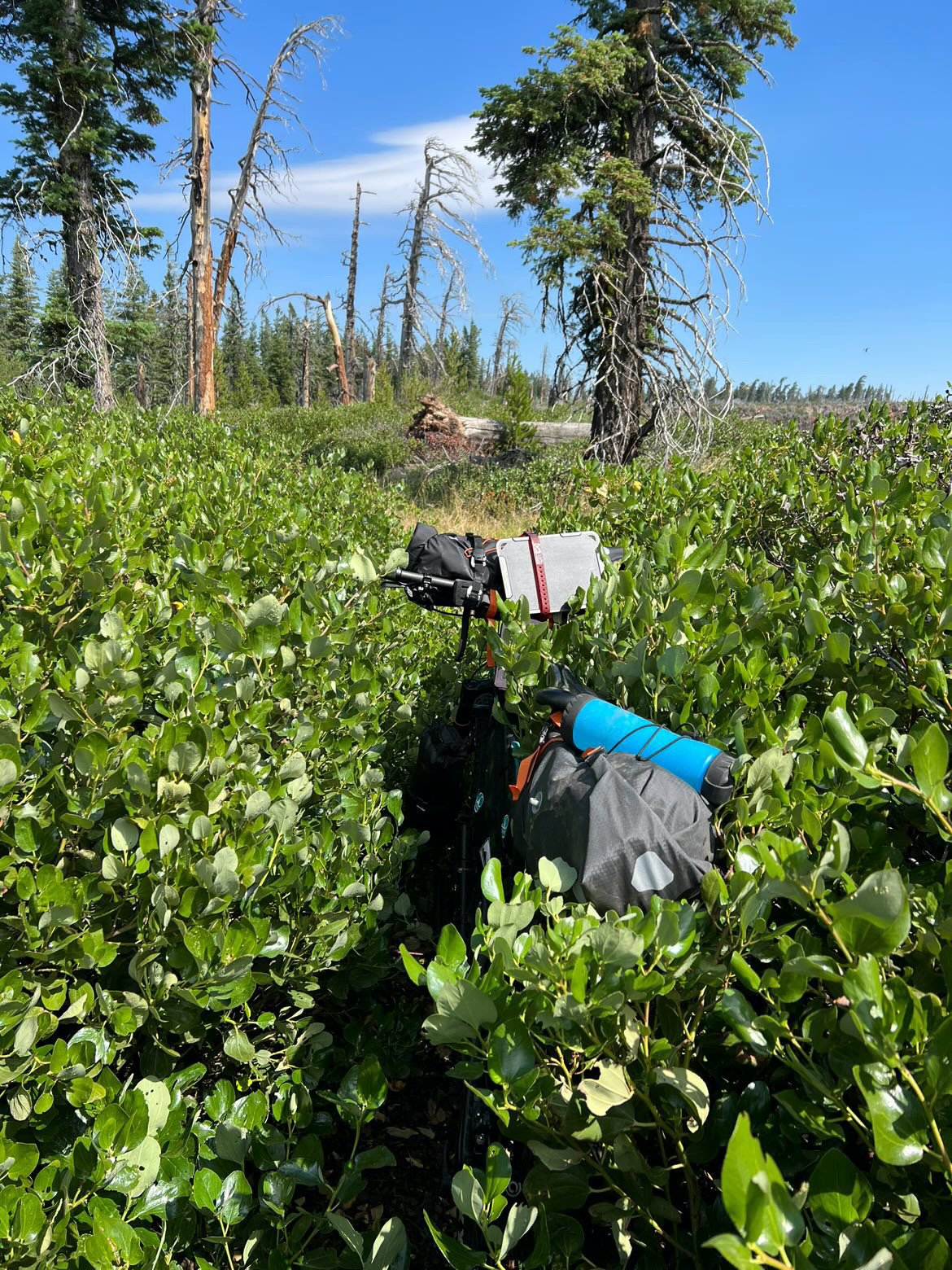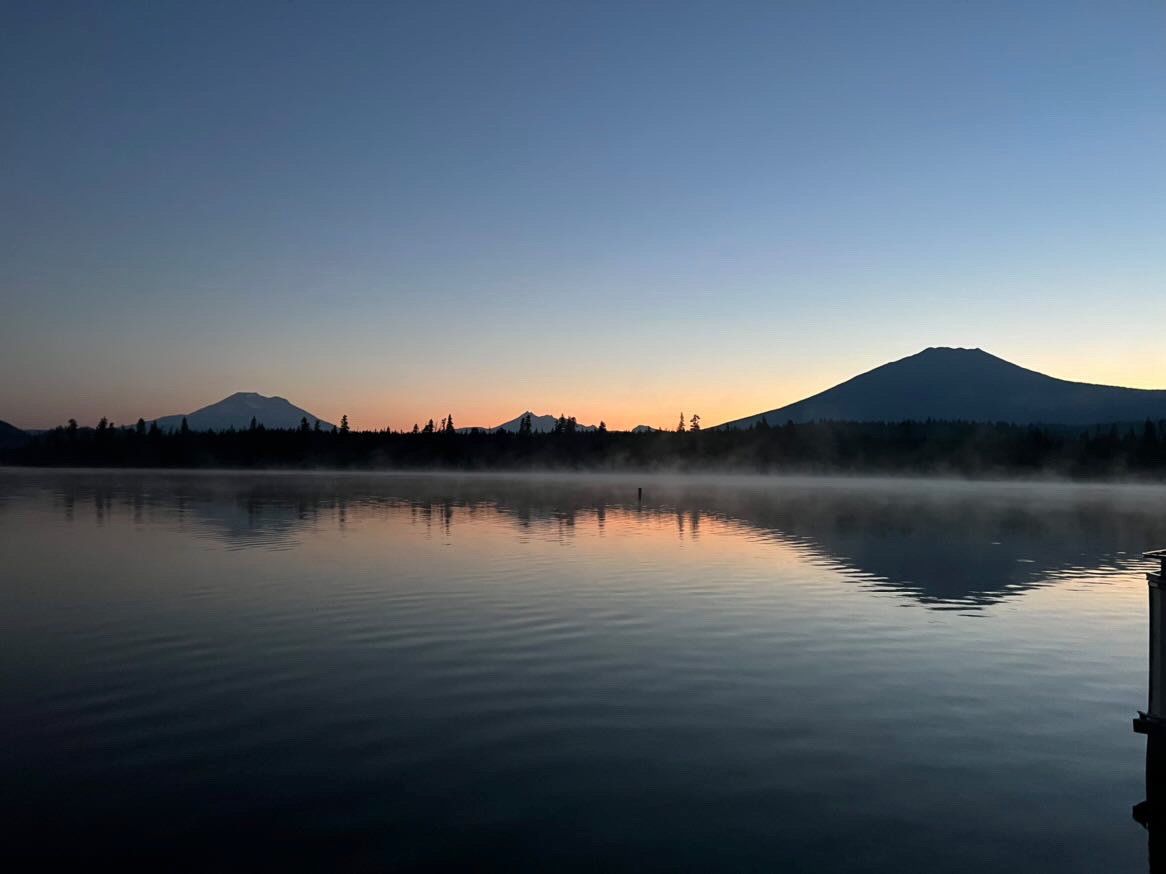Mark Shafer grew up in Kalamath Falls, and has lived and adventured across the state of Oregon. His first bikepacking trip was as a kid, riding to a nearby campground on a 10-speed bike with a backpack. He recently retired from Merrill Lynch, and now splits his time between the high desert and the Wilamette Valley of Oregon. Currently, he is on the board of directors for the Ovarian Cancer Alliance of Oregon & Southwest Washington. Mark is also a volunteer for the Oregon Timber Trail.
In 2016, his wife Kelly was diagnosed with ovarian cancer. Inspired by her experience and with her encouragement, Mark undertook a throughride of the Oregon Timber Trail this past summer. Mark dyed his hair teal (the color of ovarian cancer awareness), adopted the handle “Teal on 2 wheels” with logistical support from his wife and granddaughter, and set off on the adventure.
Why did you decide to ride the Timber Trail?
Sometimes we choose the paths we take in life, like riding the Oregon Timber Trail across Oregon. Sometimes life makes a choice for you like it did for my wife Kelly when she was diagnosed with ovarian cancer in 2016.
The reason I challenged myself to ride the Oregon Timber Trail is to raise awareness of ovarian cancer symptoms and fundraise for the Ovarian Cancer Alliance of Oregon & SW Washington, where I’m also a board member. If just a few people find my adventure interesting and take a minute to better understand the symptoms of ovarian cancer then someone in their circle of friends might avoid a late-stage diagnosis of ovarian cancer.
How did the hair dye happen?
Prior to departing on the adventure, I gave a fundraising talk for the trip at Merril Lynch, where I had worked for many years. As a part of the talk, I told them I would dye my goatee if they met a fundraising goal. They blew past that goal in one day, and the dye came out for not just my beard, but also my hair.
What was the trail like and how did it meet up with your expectations?
Prior to riding, I volunteered at a stewardship event for the Watson fire. There I met another throughrider - Missy Simula. She was really helpful for discussing gear, and also helped me understand how hard the trail can be. The Fremont tier doesn’t see much mountain bike traffic. It can be pretty hard going and is poorly maintained. Lots of downed trees and you share the land with lots of cows.
The first day, when Kelly dropped me off to start, and I saw the trail conditions, I wanted to cry. There was so much hike-a-bike and lifting the fully loaded bike over trees. Really hard work. I was so beaten and bloody by the end of the first day.
One thing that really stood out for me was how beautiful each morning was. This really helped motivate and keep me going. The wonder of waking up, feeling better, and the glory all around helped so much.
What changed as you rode and learned more?
From my past experience backpacking, I would always snack throughout the day, and then have a big dinner at night. Each day was so much work on the Timber Trail, and I needed so many calories to sustain myself, I started eating dinner early to fuel my body. Throughout the ride, I kept eating earlier and earlier. Eventually, I was having a big meal at 3:30pm in the afternoon, and then riding more.
The slow pace at the start of the trail, with all the downed trees, made me decide to be more flexible about my route. I detoured onto forest roads periodically. This really helped make better time, and also was good to enjoy riding more. I was still riding across Oregon, still seeing some really amazing landscape, but riding my own ride.
After detouring to avoid the fires around Oakridge, I was on more familiar territory in the Deschutes Tier. I took a few days off in Bend, and even floated the river. The riding in that area was a treat. The trails have been designed for mountain biking in mind, and are so well signed. I really enjoyed the ride to Sisters.
Your adventure took a hard turn in the Old Cascade Crest. What happened?
As I headed past Big Lake Youth Camp, and summited Crescent Mountain, I could see Mt. Hood for the first time. That was really inspiring. The trails in that area are technical and steep, lots of black diamond riding. After crossing Pyramid Creek, I was pushing my bike up a narrow trail and unfortunately was pushing from the downhill side. The side of the trail gave way, and I instantly fell downslope - bike and all. The next thing I knew, my legs were pinned under my bike, there were still some rocks falling around me, and I was in a lot of pain. After some maneuvering, I was able to climb back up, pull up my bike, and assess the situation. My leg wasn’t broken, but any muscle use was severe pain. Thankfully, I was able to use a satellite communication service, reach my wife, and after several hours was evacuated by Linn County Search and Rescue. By midnight, I was at a hotel in Lebanon and with my wife Kelly. Big thanks to all the volunteers for Linn County SAR for a good end to the situation.
Any advice for those thinking about a ride on the OTT, or similar adventure?
My number one motto on the trail - don’t make assumptions. I really learned that when I started out in the Fremont, and it became my mantra.
Make it your own ride - don’t be afraid to ride a parallel gravel road when you need it.
Enjoy seeing how the whole state is connected. Each region flows into the next, landscapes change. Even though the Fremont was the toughest one for me, it’s so beautiful and rare that you’ll be there to witness it.
Enjoy it for what it is - a real adventure and a real challenge
I really enjoyed doing it solo. If I was out there with a buddy, we easily could have talked each other into quitting after some of the hard days. Being solo, I just made dinner, went to bed, and woke up to a beautiful sky - ready for the new day.
Slow down and listen to your body. This is important not just for adventures like the Timber Trail, but also for detecting signs of cancer before they are too advanced.
The biggest one: you have a choice to be out there on the trail. Cancer victims don’t have a choice. What my wife experienced with her ovarian cancer was a great inspiration.










